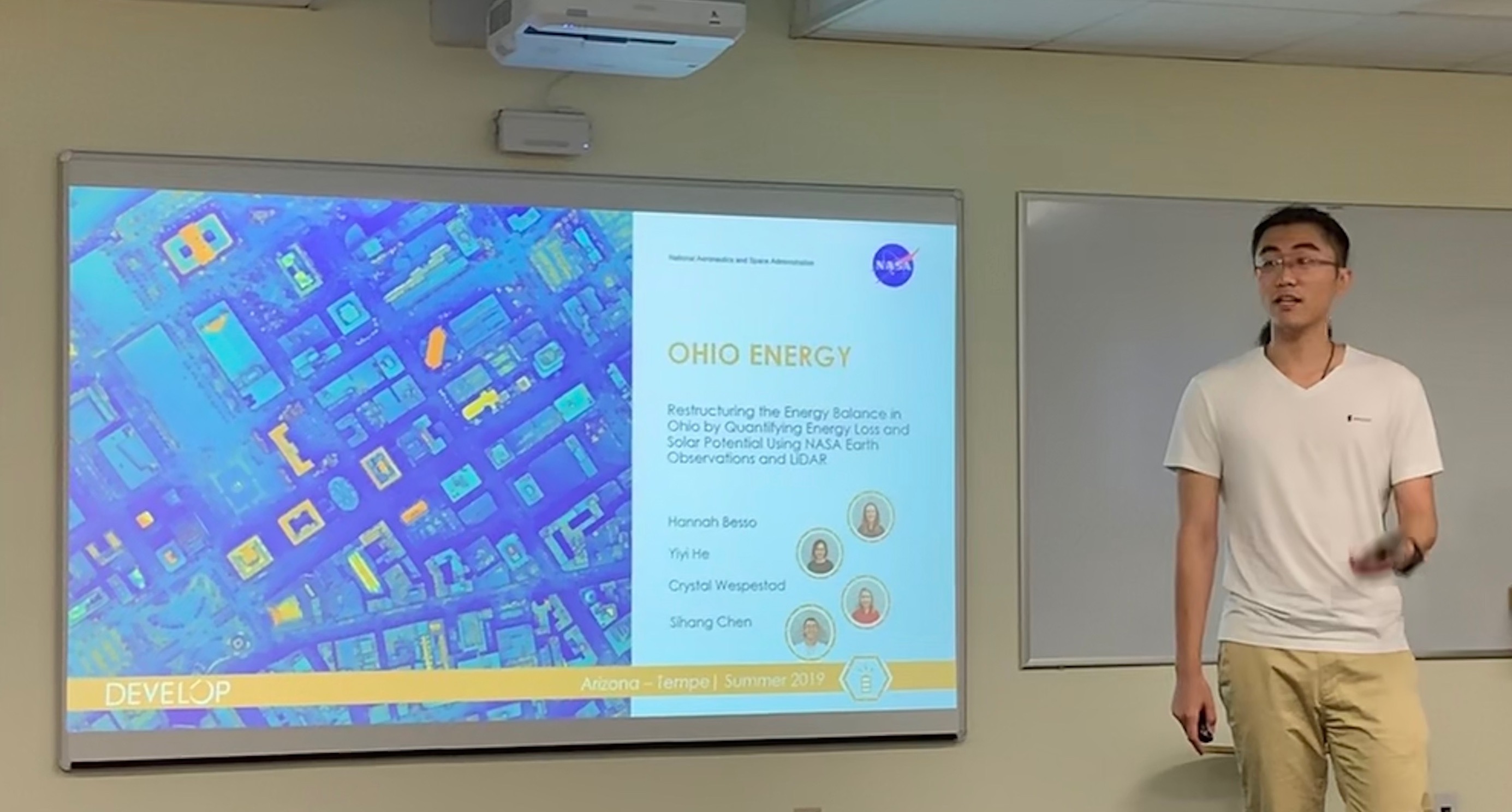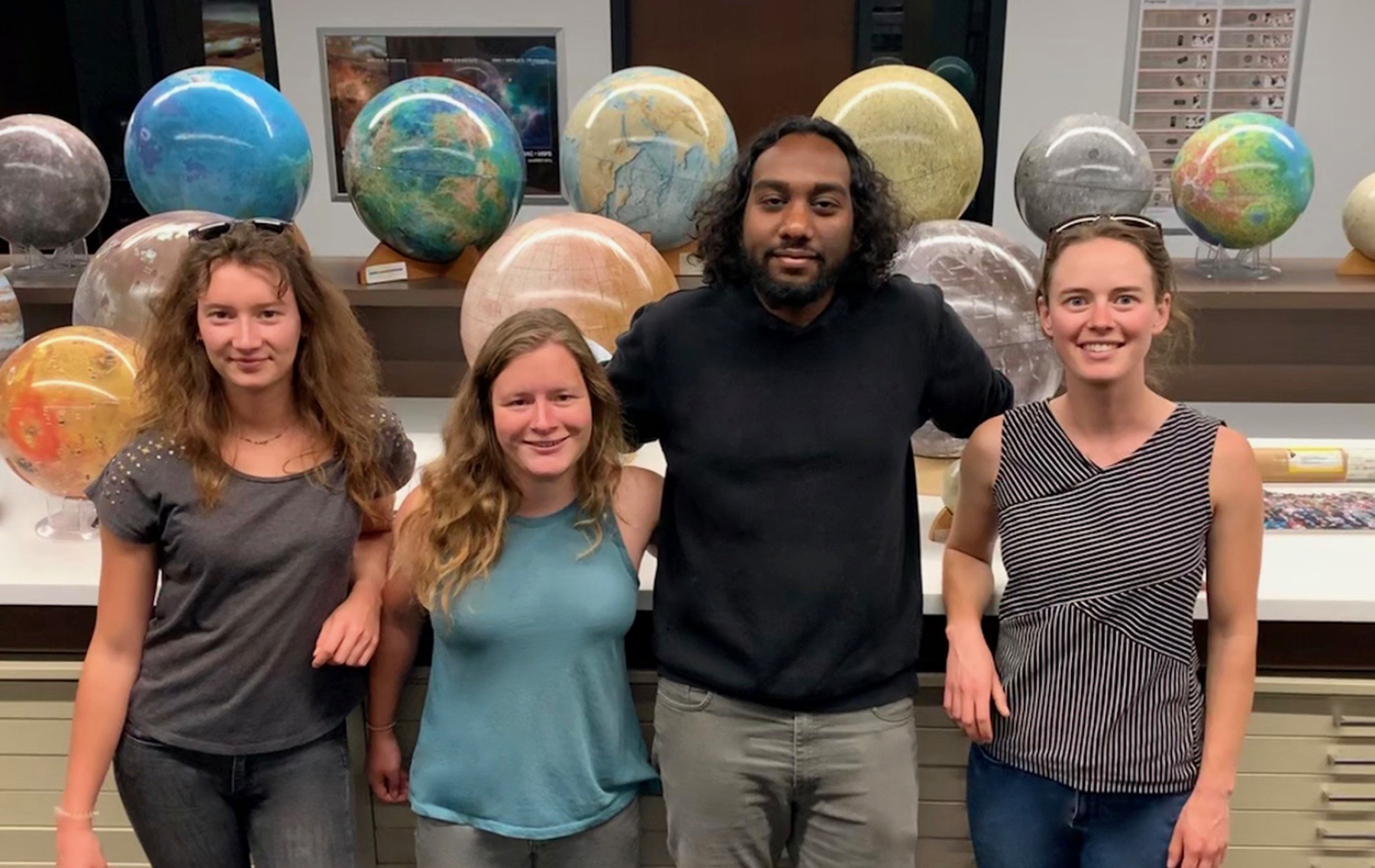Work and Fun in the Blazing Sun at DEVELOP Arizona
Through Multiple Urban Heat and Solar Power Projects, the DEVELOP AZ Location Knows all About Sunny Weather, but Also Because They are in a Desert
by Crystal Wespestad
April 2, 2020

Philadelphia Health & Air Quality team on a quick hike up the mountain near the AZ office.

Team member presenting the Ohio Energy project to ASU community members.
Tempe, Arizona is no stranger to sunshine. Just outside the city is a desert landscape and saguaro cactuses. Additionally, the DEVELOP AZ science advisor, Dr. David Hondula, specializes in studying how extreme heat impacts health. Since the summer of 2016, Arizona State University has hosted a NASA DEVELOP Program location. The DEVELOP AZ teams have done a variety of DEVELOP projects, but this past year has been sunshine centric.

Philadelphia Health & Air Quality team on a tour of the Mars Space Flight Facility on the ASU campus.

Louisville Urban Development team at the Ronald Greeley Center for Planetary Studies.
During the summer 2019 term, the DEVELOP AZ team worked on the Ohio Energy Project, in which the team developed complex ModelBuilder tools that utilized high-resolution LiDAR and NASA POWER solar data to identify rooftops best suited for generating solar energy with photovoltaic panels and estimate their potential energy output. The project helped educate the community on the utilization of green energy.
In the fall 2019 term, the AZ team worked on the Louisville Urban Development project, a feasibility study developing land surface temperature and greenness maps. This project had an unexpectedly far-reaching effect.
“Arizona participants not only have the opportunity to see first hand the effects of the heat they are studying, but also to learn from all the local experts already working to combat these issues.”One of the partners, the City Health Dashboard, plans to use the information developed by the team to add land surface temperature and greenness maps for all of the 792 U.S. cities on their website for communities and planners to use throughout the country!
The spring 2020 AZ team built on the node’s history of heat projects, and their science advisor’s knowledge about urban heat, in their Philadelphia Health & Air Quality project. By combining socioeconomic factors with exposure maps for land surface temperatures and urban greenness, the team created a heat vulnerability map for Philadelphia that contributed supporting information for cooling initiative planning.
Another exciting thing to note about the Arizona location is that DEVELOP is not the only NASA group at ASU. As a break from their sweltering sun projects, DEVELOP AZ teams take tours of NASA funded facilities on campus, like the Lunar Reconnaissance Orbiter Camera Facility, Mars Space Flight Facility, Marston Exploration 3D Theater, Ronald Greeley Center for Planetary Studies, and Center for Meteorite Studies.
Arizona participants not only have the opportunity to see first hand the effects of the heat they are studying, but also to learn from all the local experts already working to combat these issues.